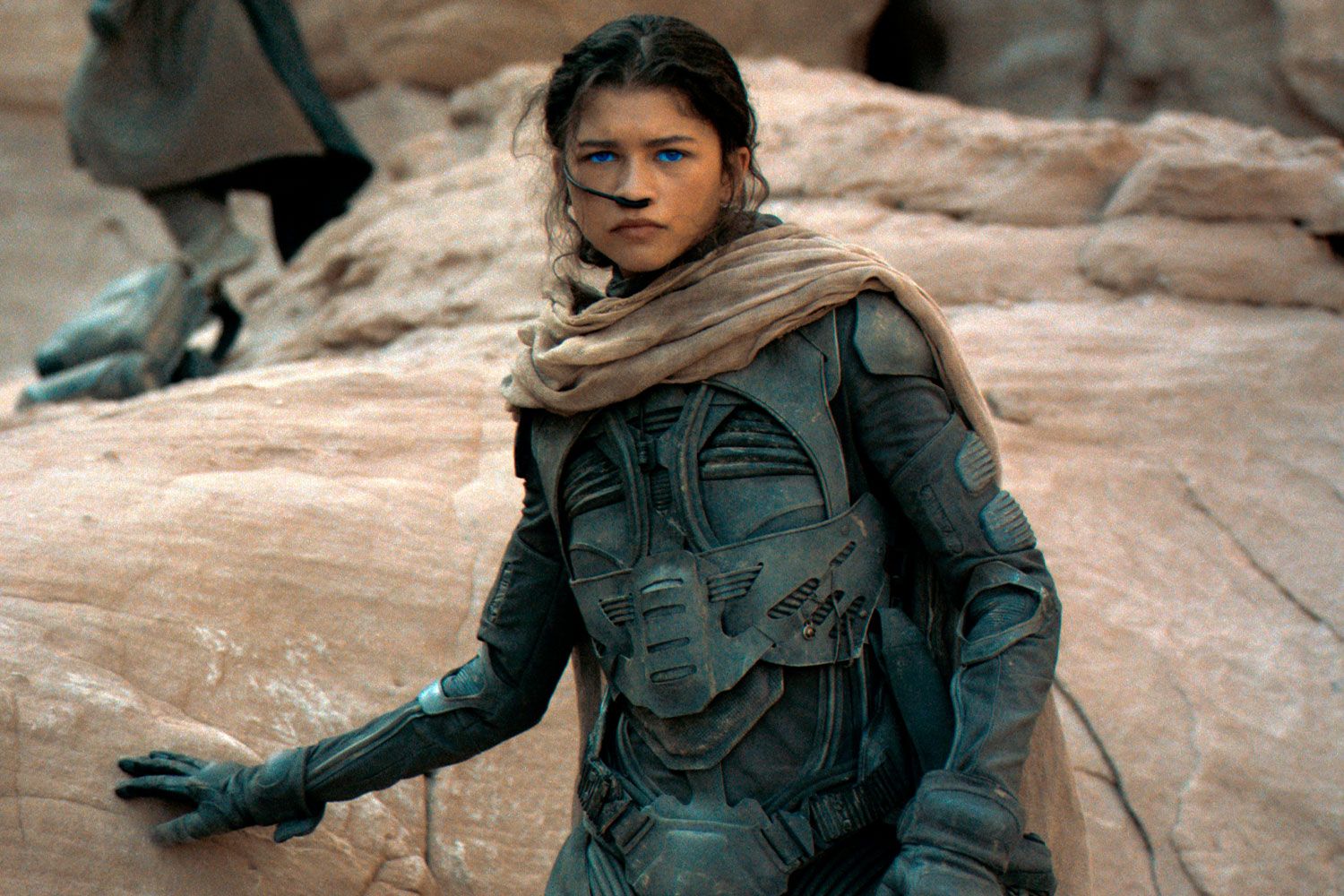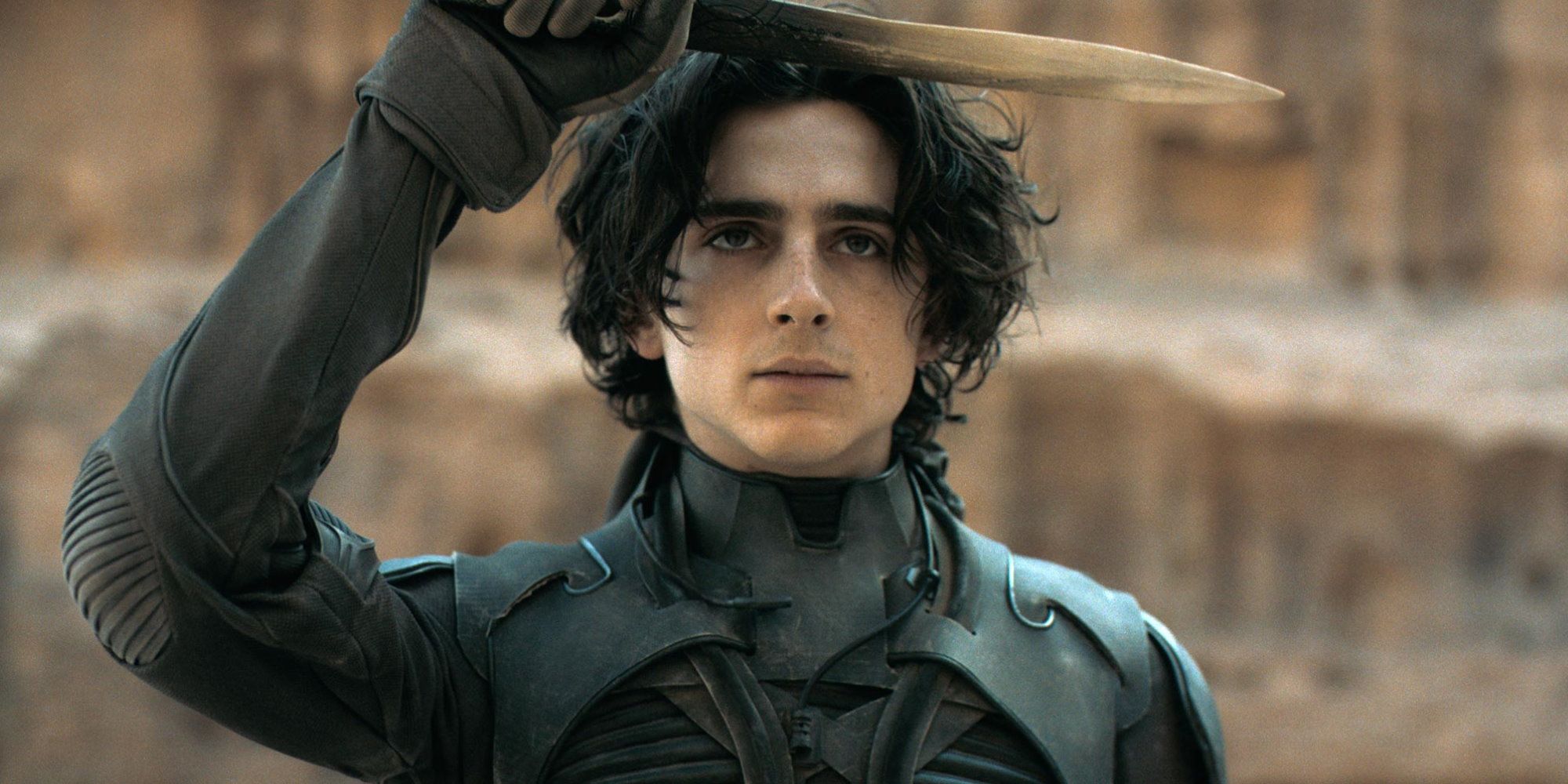Denis Villeneuve and Dune seemed a perfect match from the start. Villeneuve’s two biggest hits previously, Arrival and Blade Runner 2049, are both grounded yet grand - like Dune, both deal with epic sci-fi concepts with a taut focus on realism. Arrival’s colour palette is bleak and grey, while Blade Runner’s is bombastic and neon, full of burnt orange and glowing red, occasionally interrupted by harsh concrete. Dune, set mostly in the sandy desert but with patches of lush, fresh green, was a new version of the old idea - taking a large, fantastical story, and bringing it down to the level of the people.
As Dune becomes available for digital download (4K UHD, Blu-Ray, DVD, and VOD are coming on January 31st), we spoke to three of the men who helped make Villeneuve’s vision a reality; visual effects supervisor Paul Lambert, head of production design Patrice Vermette, and director of photography Grieg Fraser.
Obviously, one of the major parts of Dune is the worm. We previously ran an interview where Lambert, Vermette, and Fraser discuss the worm which you can check out here, but one of the most notable things the worm shares with the rest of the movie is its scale. This, Fraser says, was one of the hardest things to pull off. “The biggest challenge is the scale of everything, nothing is normal sized,” he says. “I was talking to somebody yesterday and I showed them the concept work for the Nexus, which is that big dome. And I said, ‘Do you see that person in there?’ they said ‘no’ and I was like, ‘exactly, they’re a pinprick on the bottom there’.
“The scale of the thing is three times the size of a stadium and we don't normally shoot these things in a real world. It’s normally very VFX. Okay, here's a person against blue screen, and then draw a plate of something behind. One of the first things that Patrice and I spoke about was that this has to integrate, it's really hard to make that sort of scale integrate with humans, because it's so large. We looked at the water coolers in nuclear reactors. I've shot in one of those, and that's big, but it's still not big enough to be what we're talking about. So trying to get that scale apparent on the screen was really hard because, as I said, it's easy to put a person in front of green and then draw it. But what's harder is having them go through a shadow, like if characters go through the sun into a harsh edge of shadow. It may not look hard, which I'm really happy about, because that means I've done my job properly. But it's really hard.”
It’s not just the scale of it all though - Dune is also very small and intimate in places. With scenes in cramped spaceships and enclosed tents, Vermette says the bigger challenge was not just the raw size of everything, but the balance of these sizes.
“When you read the book obviously there's a scope of the journey of Paul Atreides,” he says. “[Paul’s] walking from Caladan, where you feel the moisture, you feel that it's a world that's been there for ages. But it's time to move on, it's like Fall, you know, it's like Autumn. It's a season, so it's very claustrophobic. But design wise you need to have these breathing areas, the big scope, the big, the big sets, the big, the big views in the desert - we went to a real desert - but the story is very internal. It’s Paul's journey and especially the relationship with the mother. So in advance, you know, it's I think it serves the small spaces served the purpose of the internal turmoil that Paul is going through during his journey. We actually thought the tent was too big, but I think it's kind of in the womb, that was the idea of the tent, especially because there's a discussion with the mother. Paul goes back into the womb.”
Since Dune was shot in a real desert and used real sets over green screen to capture the scale of things, it meant the VFX team had more time and space to focus on the smaller details of the story. This, plus the advancements in technology, meant there were effects in the 2021 Dune that wouldn’t have been possible in David Lynch’s 1984 version, as Lambert explains.
“Something which comes to mind straight away is the hologram sequence,” he says. “I wanted to avoid a very close up of a digital Paul. It can be done, but it's very expensive, and it takes a long time, especially for close ups, and trying to get light onto the surface of the skin. So we came up with a technique, where we wanted to get a true interactive light on Paul so what we came up with was we got the bush [that Paul moves through] approved by Denis early on, and we sliced it up. Then we had a real time tracking solution of Timothee [Chalamet] on the set, and dependent on where he was we would project the relevant slice onto him. So then as he moved, the actual slices changed, which then gave the impression that he was moving through the branches, and like we had the perfect interactive light because it was actual light on his skin and on his clothes. So then, the only thing we had to do in post - and I say only but it was still tricky - was to then put the rest of the CG holographic bush around him. It just gave him a sense of believability because you didn't question the interactive light on him. That's very much a technique which you couldn't have done in the ‘80s.”
Dune is available on digital download now and 4K UHD, Blu-Ray, DVD and VOD on 31st January.



